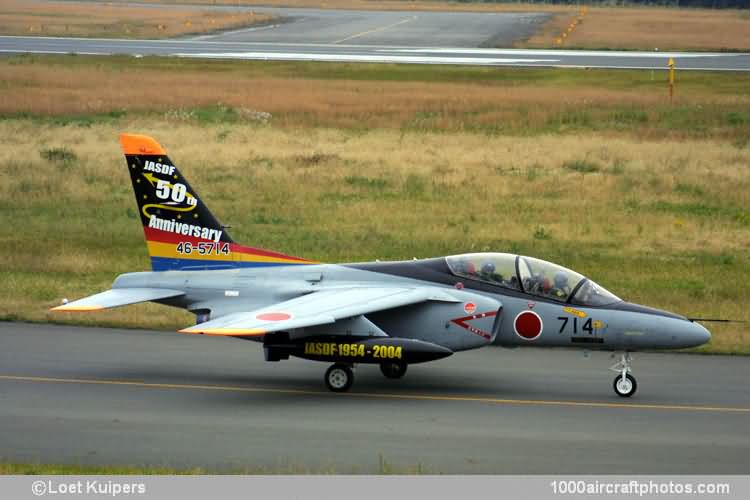The T-4 was based on Kawasaki's KA-851 design, by an engineering team led by Kohki Isozaki. The twin-engined T-4 was required to have high subsonic maneuverability, and to be able to carry external loads under the wings and fuselage. Basic design studies were completed in October 1982, and prototype construction began in April 1984. The first XT-4 (s/n 56-5601) made its first flight on July 29, 1985, and all four prototypes were delivered between December 1985 and July 1986, preceded by static and fatigue test aircraft.
Mitsubishi (center fuselage and engine air intakes) and Fuji (rear fuselage, wings and tail unit) each had a 30% share in the production program. Kawasaki, as prime contractor, built the forward fuselage, and was responsible for final assembly and flight test. Ishikawajima-Harima delivered the 3,680 lb (1,669 kg) F3-IHI-30 turbofans. Production began in FY 1986, and the first production T-4 made its initial flight on June 28, 1988. Deliveries started on September 20, 1988, and a total of 212 aircraft were produced.
Since 1995 the JASDF Display Team 'Blue Impulse' is using the T-4, the team is part of 11 Hikotai (Squadron), while the pictured aircraft, wearing a JASDF 50th anniversary (1954-2004) color scheme, is assigned to 204 Hikotai."
Span: 32 ft 7.5 in (9.94 m)
Length: 42 ft 8 in (13.00 m)
Height: 15 ft 1.25 in (4.60 m)
Wing area: 226.05 sq.ft (21 sq.m)
Weight empty: 8.157 lb (3,700 kg)
Weight max: 16,535 lb (7,500 kg)
Max speed: 667 mph (1,074 kmh)
Cruise speed: 556 mph (895 kmh)
Service ceiling: 50,000 ft (15,240 m)
Range: 1,036 mls (1,668 km)
